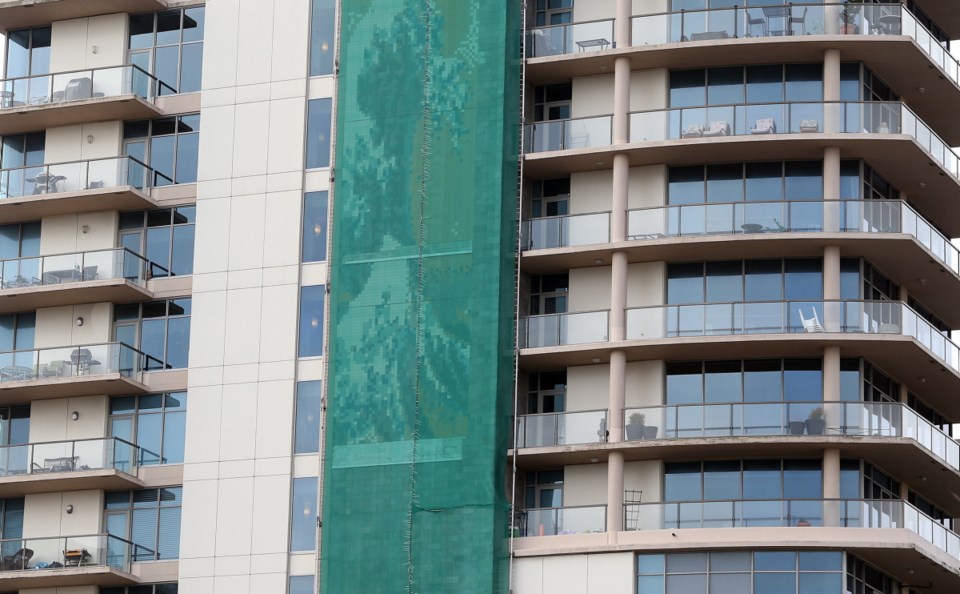Victoria council has cleared the way for the long-shrouded wave mural on a Yates Street condominium to come out from under wraps.
Councillors on Thursday gave their blessing to a plan to replace the failing tile mosaic — one of the selling points of the building when it was approved more than a decade ago — with a painted version.
The paint replacement was rejected in 2014 by the council of the day after councillors argued the promise of a tile mosaic played prominently when the building, located at 845 Yates St., near Quadra Street, was approved.
Councillors agreed last year to reconsider.
The giant mosaic — a depiction of The Great Wave by the Japanese artist Katsushika Hokusai — has been under a shroud since improperly applied tiles began coming loose and crashing to the ground in 2011.
A consultant found a number of issues relating to the initial installation.
That led to a complicated set of negotiations involving the strata council, the builder, sub-trades, building envelope specialists, architects, insurance providers and lawyers to determine how best to fix the problem and who would pay for what.
In a letter to council last year, strata president Eric Metson said the cost of retiling the mosaic was estimated at $650,000, which would require owners to pay an average of $6,500 per unit in a special assessment. Previous estimates put the cost of a paint replacement at more than $100,000.
Coun. Pam Madoff, who was on the council that approved the building, said the tile mosaic was “a very important amenity” at the time.
“I think what is very disappointing — and it’s probably a very bitter lesson learned, I would think in particular for the residents of the building who might not be aware of liability — is that the people who should be held accountable for this are not able to be held accountable,” Madoff said.
She noted that the reports are very clear that the tiles were improperly installed.
“It’s not that it was an inappropriate materials choice. All you have to do is look at the building on Fort Street called the Mosaic built in the 1960s,” she said. “If tile is properly applied, it has a very, very long shelf life.”
But, Madoff said, she didn’t want to prolong the hardship of the residents any more.
Coun. Charlayne Thornton-Joe, who also was on the council that approved the building, agreed.
“Regardless of what the [replacement] choice is, it’s going to be more costly to the residents who never intended this to happen,” she said.
Coun. Ben Isitt was the sole councillor to vote against, arguing it was “a slippery slope” for the city to allow builders out of commitments they make as a condition of approval.
“If they can then relinquish those commitments a decade later, what are those original promises worth in rezoning and development approval processes?” Isitt said.
City senior planner Charlotte Wain said the paint replacement will essentially take a “paint by numbers” approach.
The mural is made up of thousands of 10-centimetre-by-10-centimetre ceramic tiles. The idea is to remove the tiles and paint in the mural using a 10 cm grid. The paint colours have been selected using the tiles in the existing mural. Wain said the plan “will result in minimal differences from how the mural is viewed in its current form.”
A covenant will ensure regular maintenance.



